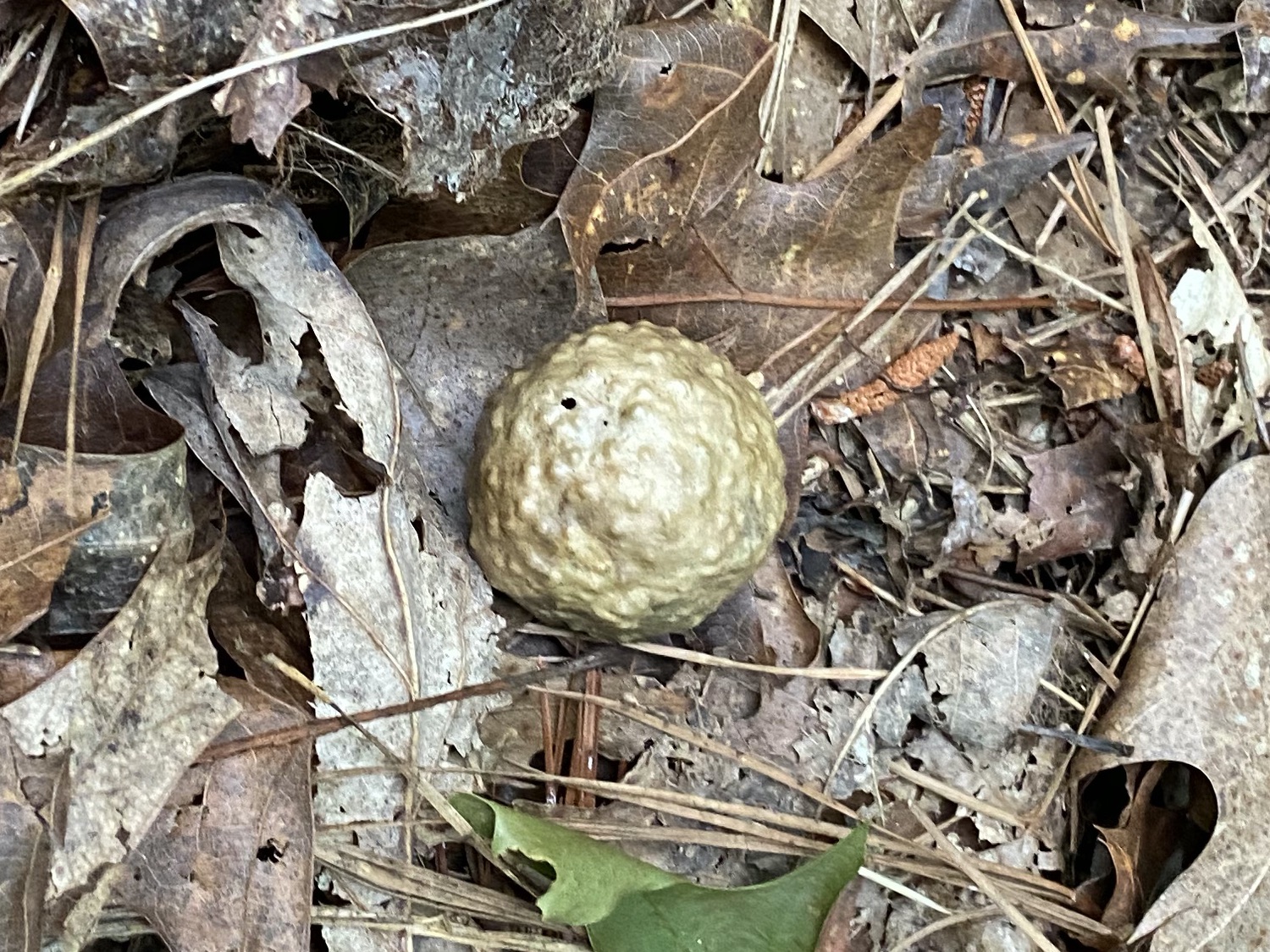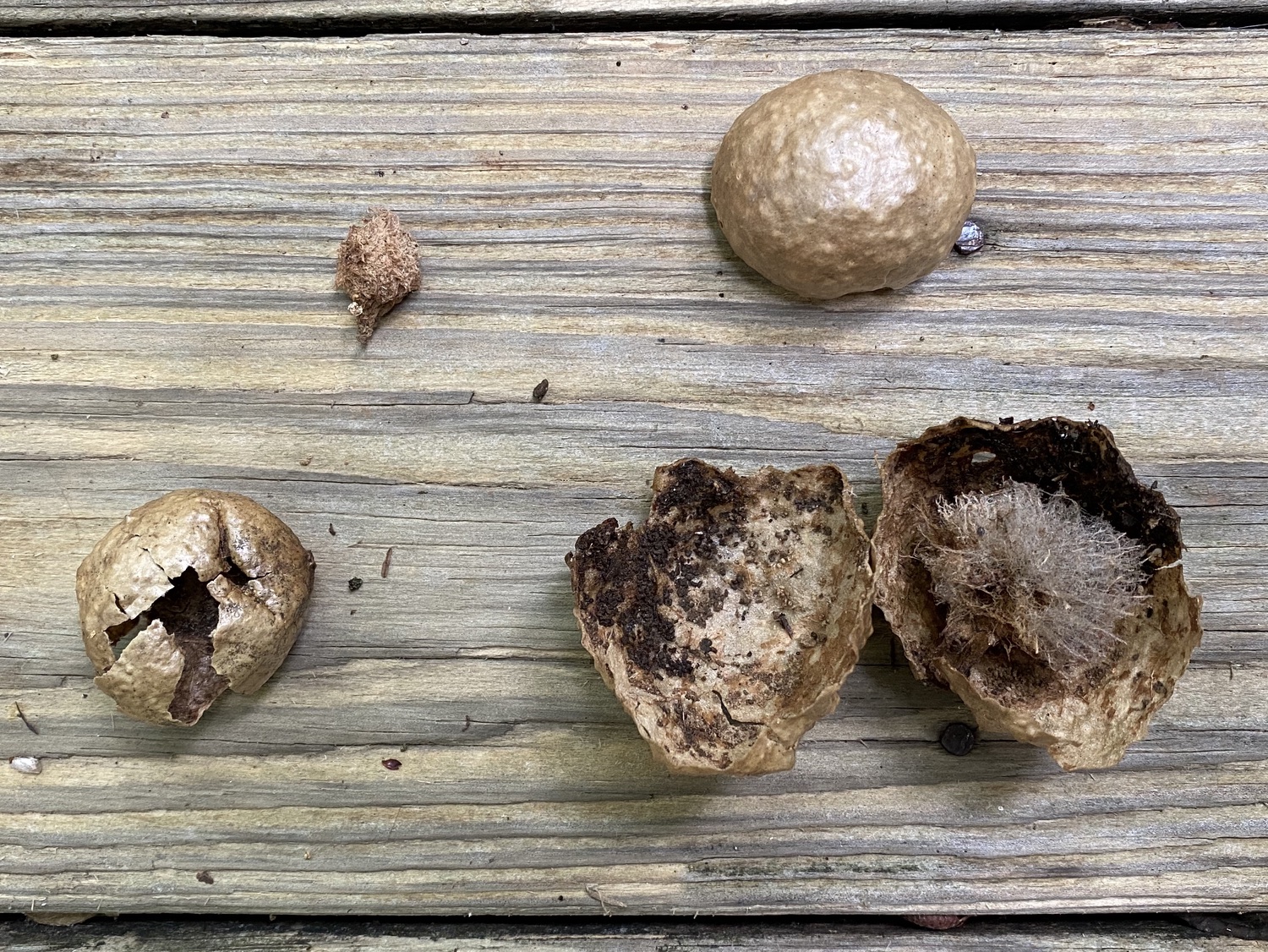OAK-APPLE GALLS
6/6/20
All spring, I’ve noticed brown lumpy spheres about the size of a golfball, and figured they were a puffball, a type of fungus. They’re not; they’re much more interesting.
Here’s what one looks like:

They vary in size from about 1–2" in diameter. The outside is usually some muted shade of brown, and they tend to be shiny. Some are green. Many have a small hole in them, and sometimes they are cracked, showing that they are mostly hollow inside.
I originally searched my mushroom guide for Georgia, thinking these were puffballs, but nothing in the guide had that combination of shininess and lumpiness. I was also puzzled by why puffballs would be found in the street. Not knowing where to go, I tried a web search of images for “lumpy brown forest balls”, and among the other odd things that such a search produces was a photograph that matched perfectly. These spheres are Oak-Apple Galls, also simply called Oak Apples and Oak Galls.
Oak-Apple Galls are growths on oak leaves that are triggered by a wasp that lays an egg inside the leaf. The egg triggers the plant to produce this sphere, with the egg at its center. The gall not only provides shelter and protection for the developing larva, it is also its food. The wasps that make galls belong to the Cynipidae family. The galls vary in their shape and structure, depending on the species of wasp.
The galls generally have a thin outer shell. Inside may be a radiating mass of fibers or flesh like an apple, giving these their name. The galls are green when the larvae are developing, but they turn brown and fall from the tree once the larvae emerges emerges. That’s why most of the ones I find are brown, and it also explains why they are common in the street and not just on the forest floor.
Searching more, I found a few some that show the structure of the hollow ball and the remains of the fibers. Several sources suggest that these are made by the wingless gall wasp, Amphibolips confluenta, and The Brandywine Conservancy has a great article on the unusual life history of this wasp. Black, Scarlet, and Red Oaks are the preferred hosts.

These galls are common in the part of our neighborhood with an oak-hickory forest. In my future walks, I’ll look more into the trees, hoping to spot a green gall.